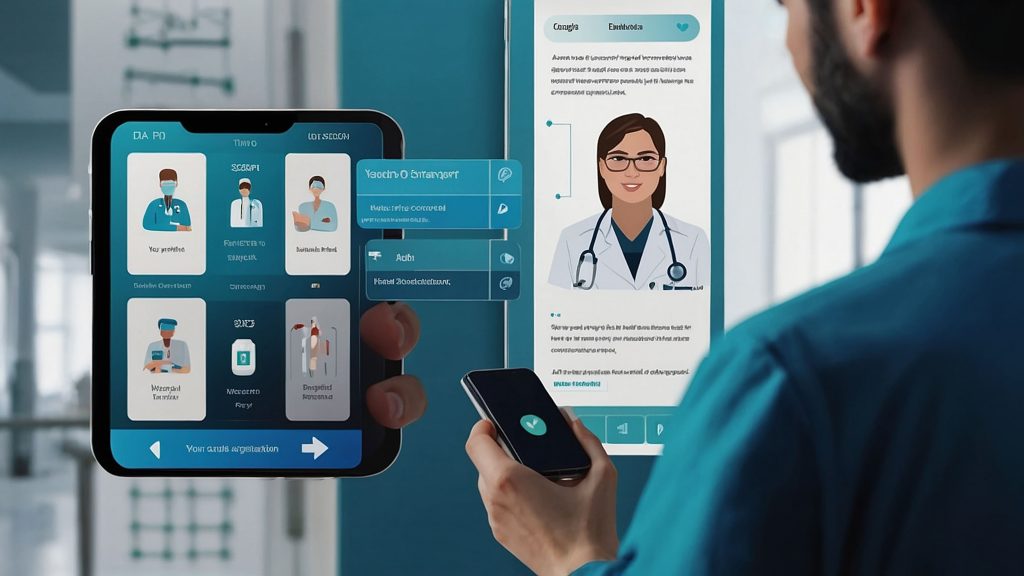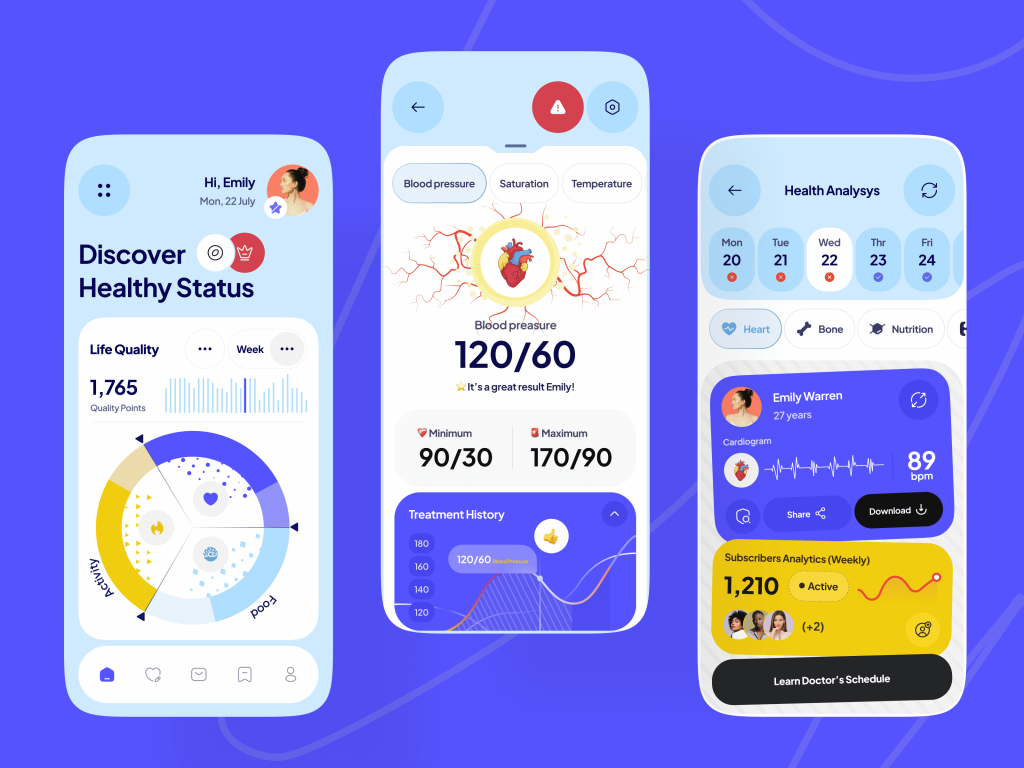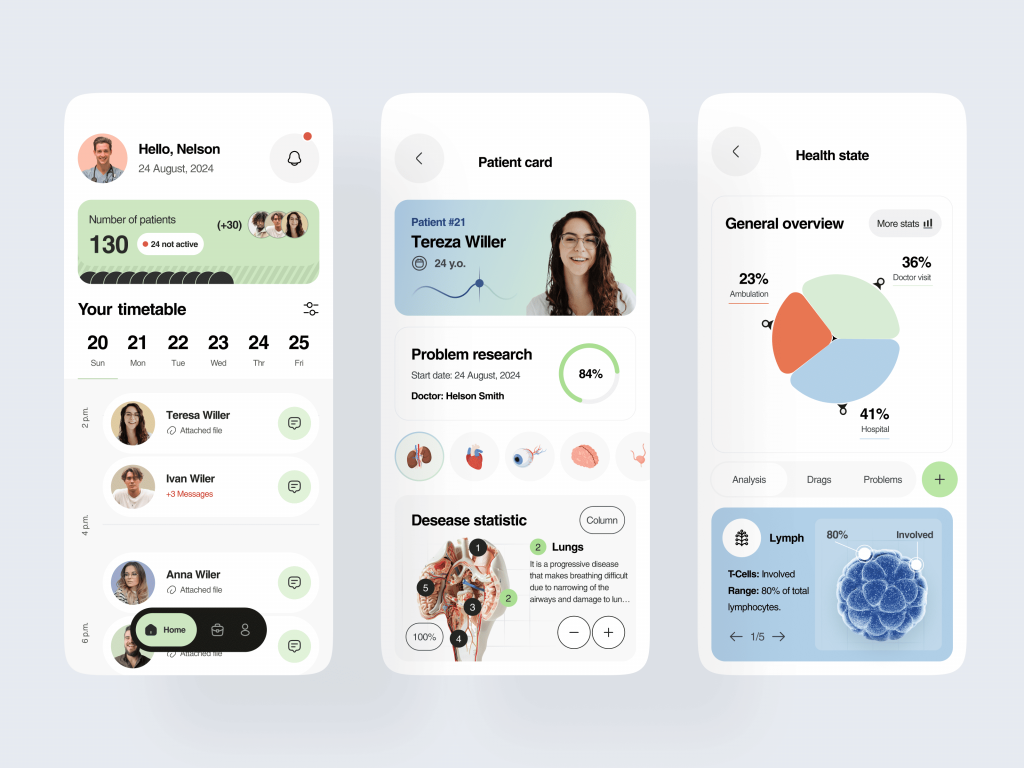Building a healthcare app in 2025 means navigating a highly regulated industry while delivering real value to patients, clinicians, and healthtech investors. But how much does it actually cost to bring a healthcare app to market?
At Tino Agency, we’ve helped digital health startups and medical institutions turn their app ideas into HIPAA-compliant, scalable products. In this guide, we’ll break down real-world cost ranges, explain what impacts your budget, and show how to avoid the most common cost-related mistakes.
Average Healthcare App Development Costs (2025)

Your final cost depends on app complexity, feature set, and compliance needs, but here’s a general idea:
| App Type | Cost Range | Timeline |
|---|---|---|
| Telemedicine | $150,000–$450,000 | 4–8 months |
| Fitness/Wellness | $55,000–$120,000 | 2–5 months |
| Chronic Care | $65,000–$280,000 | 4–10 months |
| Scheduling/EMR | $50,000–$150,000 | 2–6 months |
💰 What Actually Impacts the Cost?

Here are the main cost drivers:
- Scope of features: The more interactive features you want—like video calls, e-prescriptions, and dashboards—the more effort is required.
- Security & Compliance: HIPAA, GDPR, and other regional regulations mean added time and legal oversight.
- Backend complexity: Integrating with EHRs or wearables (like Apple Health or Fitbit) adds to the workload.
- Custom UI/UX: Bespoke patient and doctor-facing interfaces take longer than using templates.
- Maintenance & updates: Post-launch iterations, user feedback, and ongoing compliance changes require ongoing budget.
🧩 Pricing Models: Fixed vs Time & Materials
There are two common pricing models:
1. Fixed Price
- Best for small MVPs or well-scoped pilot projects
- Pros: Predictable budget, clear deadlines
- Cons: Limited flexibility, hard to pivot during development
2. Time & Materials (Agile)
- Best for medium and large projects with evolving needs
- Pros: Fast iteration, easier product-market fit
- Cons: Requires more collaboration and ongoing planning
At Tino, we typically use Agile/time & materials, but with structured milestones and clear budget visibility to help our partners stay in control.
🔐 Cost of HIPAA Compliance

Compliance isn’t optional—and it isn’t free. HIPAA impacts:
- Data encryption
- Secure hosting and backups
- Authentication & access control
- Privacy policies and legal reviews
Expect HIPAA-specific requirements to add 15–25% to your total budget, depending on your starting point.
💡 How to Keep Costs Under Control
- Start with a lean prototype or clickable design – Validate your idea first.
- Prioritize must-have features – Don’t overbuild your MVP.
- Use pre-built compliant modules – Saves time on user auth, data storage, etc.
- Choose experienced devs – Mistakes in healthcare cost more than time; they cost trust.
- Plan for post-launch – Set aside 10–20% of your budget for updates and iterations.
🧠 Common Mistakes to Avoid
- ❌ Comparing cost quotes without understanding what’s included
- ❌ Ignoring compliance in the early stages
- ❌ Underestimating backend infrastructure
- ❌ Assuming fixed price means fixed results
- ❌ Hiring generalist developers instead of healthtech experts
FAQ
Anywhere from $100,000 to $400,000+, depending on complexity, integrations, and compliance scope.
From 2 months for a simple MVP to 9–12 months for a feature-rich platform.
Yes—using AI-assisted development or low-code solutions can reduce front-end or back-end effort by 10–20% in some cases.
For startups: Agile/time & materials. For pilot projects, a fixed price can work.
Absolutely. We guide clients from idea to launch with detailed roadmaps, clear budget ranges, and proven healthtech experience.
📞 Want to build a healthcare app in 2025? Let’s talk. We’ll help you estimate costs, avoid hidden traps, and design a product that makes an impact.
